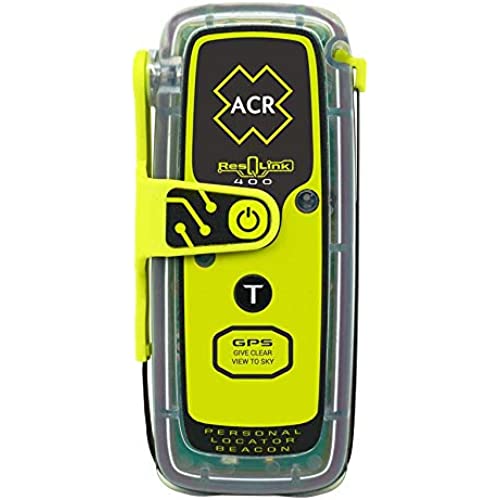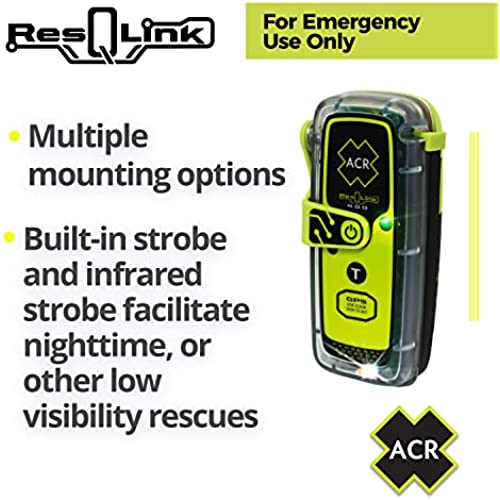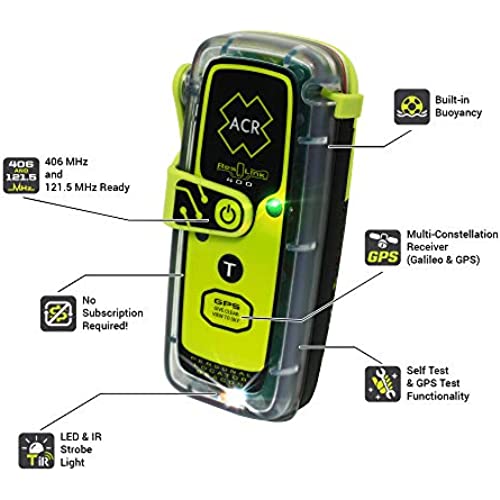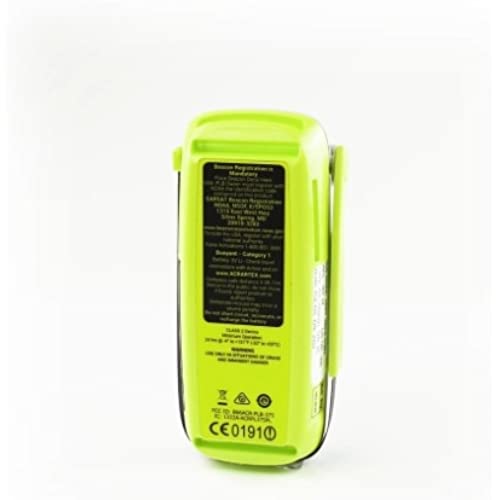













ACR ResQLink 400 - SOS Personal Locator Beacon with GPS (Model: PLB-400) ACR 2921
-

Shine Like A Diamond
> 3 dayI couldnt give any stars for the battery life because I just got it , I assume its battery will last like it says. This was very easy to register online . The instructions were very simple on how to use it . As far as I know it will work , i did run the test and it passed. Size wise its about like a small version of the old clunky cell phones and not super heavy but heavier than the average cell phone . Id say worth the money for the peace of mind. I think anyone that goes out on the water should have one of these . Things can go very wrong very quick.
-

TaraM
Greater than one weekMy husband purchased this and was very pleased with the ease of setting up and registering. We have had to use it yet, but definitely gives me piece of mind knowing we have it with us.
-

JW
Greater than one weekI can only really give it Zero Stars. A review for something I have not used is no review at all. Its nice looking and small. The Test Button works and the antenna deploys. If I ever use it, I will follow up on this review with my experience.
-

Ray LaValley
Greater than one weekBut also make sure not to confuse the manufacture date (to the immediate right of the uin and in black on white) with the battery life (black on yellow)....wasnt very visible when I went to register the product. If you register any product ever, this is one not to skip. You might not know what kind of product you have. They changed the website so the warranty registration was under a link leaving me to wonder how current the product was. Glad to find out it exp in 2026, not 2020
-

Zephyr
> 3 dayI cant comment on how it works because to test that feature would cost several thousand dollars after paying rescue teams. However, I have no reason to believe that it wouldnt work. It is obviously very high quality. NOOA registration is a requirement as, once initiated, NOAA handles the actual rescue process. No registration, no rescue. I carry with me on all my hiking trips.
-

Jim
> 3 dayIt appears to work fine. Hopefully I will never have to test it for real. All the setup and registration was easy and worked flawlessly. All the self test checks worked with no problems.
-

Michael
> 3 daySimple design. Easy to use and understand. Thankfully haven’t needed to press button yet but I am ready!!!

